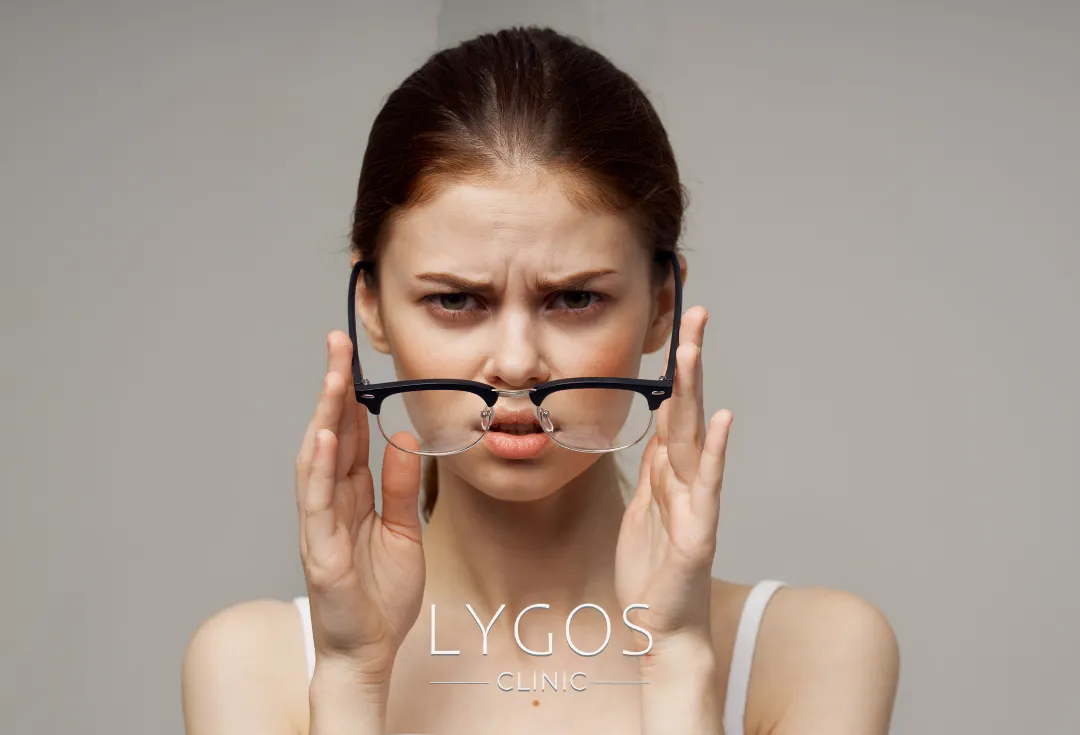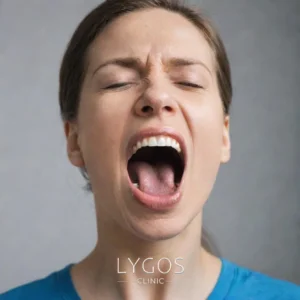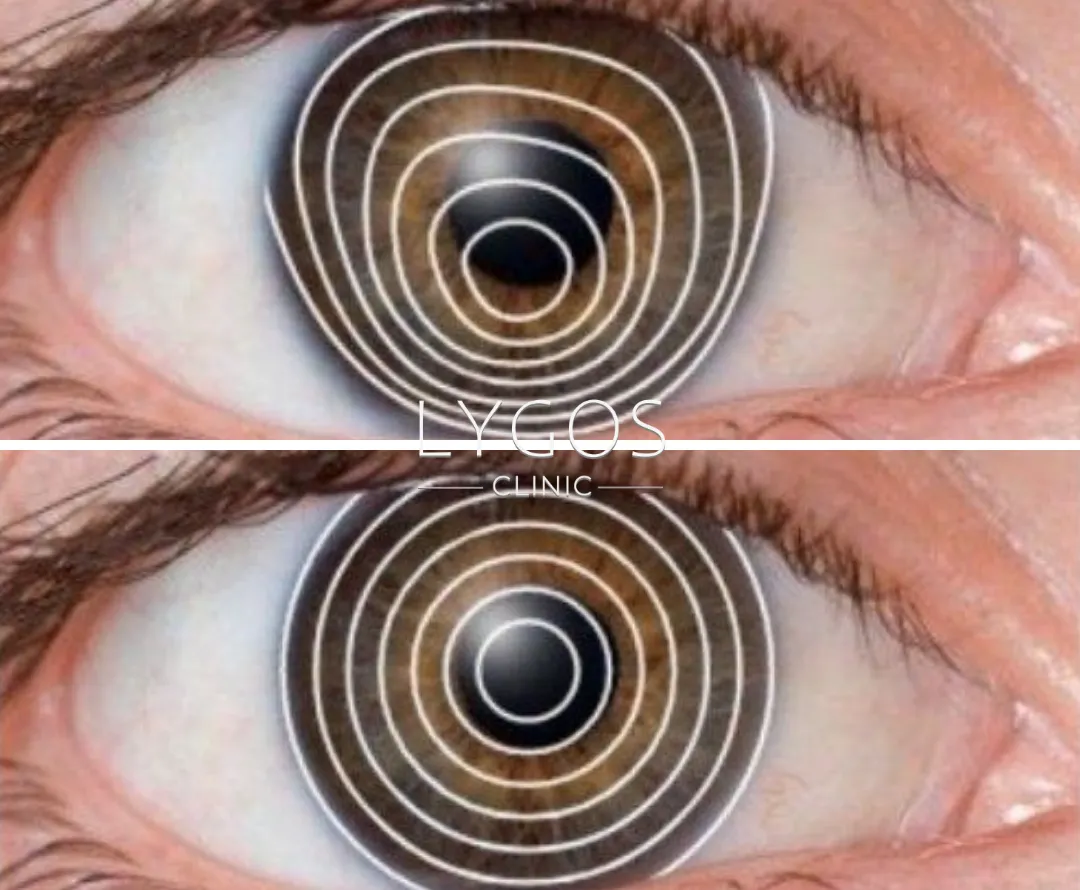What is Myopia (Nearsightedness)?
Get Free Consultation
Chose Your Topic

What are the Symptoms of Myopia?
Myopia can manifest itself with symptoms such as blurred vision of distant objects. In this case, people may feel the need to squint or partially close their eyelids to get a clear view. Eye strain and associated headaches are also among the symptoms of myopia. Difficulty seeing, especially when driving at night, can be an important symptom of myopia.
Myopia is usually diagnosed in childhood. A child who has trouble seeing distant objects may have the following symptoms: persistent strabismus, the need to sit closer to the television screen, pretending to be unaware of distant objects, difficulty reading what is written on the blackboard at school, excessive blinking and frequent rubbing of the eyes. Such symptoms should be carefully monitored to protect children’s eye health.
How is Myopia Diagnosed?
When diagnosing myopia, a standard vision test is performed. For this, the patient tries to read letters and numbers on a chart from a certain distance. Myopia is diagnosed with various measurements performed during the eye examination. In this process, advanced devices such as autorefractometers and plusoptix for children are used.
The number that the patient sees best is determined with phoropter and trial lenses. Diagnosis is carried out using the most modern devices in hospitals equipped for this problem. There are different types of myopia. These are evaluated in detail as conditions such as mild, moderate, high myopia and astigmatism. If astigmatism is present, the corneal surface is mapped with a corneal topography device.
The patient is then offered treatment options such as glasses, contact lenses and laser surgery, and the most appropriate method is recommended. This process is of great importance in terms of protecting and improving the visual health of patients.

How is Myopia Treated?
Using Glasses or Contact Lenses: Glasses or contact lenses are preferred to help distant objects focus correctly on the retina. For most people, glasses are the first choice of treatment. However, for some individuals, contact lenses offer clearer vision and a wider field than glasses.
Since contact lenses are used directly in the eyes, care must be taken to protect eye health. Precautions should be taken for this. Depending on the degree of myopia, it may be recommended to wear glasses or contact lenses all the time or only during certain activities.
Laser Eye Surgery: Laser eye surgery can be performed to change the shape of the eyeball. However, such interventions are not suitable for children as their eyes are still developing.
Artificial Lens Implants: Artificial lenses permanently implanted in the eyes can be used to ensure correct focusing.
Intra-Corneal Rings: Plastic rings called INTACS are placed in the eye to correct the shape of the cornea. The advantage of these rings is that they can stay in place permanently and can be removed or corrected as needed.

Laser Myopia Treatment
Laser myopia treatment has an important place in the field of eye health as an FDA-approved and reliable technology. This treatment method is an effective option that can be applied without the risk of blindness. If the patient’s eye structure is suitable, laser treatment can be performed a second time.
It is also possible to perform cataract surgery after laser myopia treatment. However, lazy eye cannot be treated with laser. Since laser myopia treatment is applied directly to the cornea, there is no damage to the retina layer. This method should not be considered a painful and bleeding treatment. During laser treatment, anesthesia is applied with drops to reduce discomfort in the eyes.
This prevents patients from feeling pain or soreness during the procedure. The use of eye drops is required after the procedure. Also, patients can return to their normal life the next day. Therefore, laser myopia treatment stands out as an effective and quick option for correcting vision defects.
Myopia Astigmatism Treatment
Types of Myopia
Types of myopia are determined depending on the visual defects in the eye. This is related to how clearly the person can see distant objects. Myopia is called mild myopia if the degree of myopia is below 3 diopters and severe myopia if it is above 6 diopters. People with severe myopia have more difficulty seeing distant objects.
The degree of myopia tends to increase, especially among growing children and young people. This is also related to the effect of the development of the eyes. Usually between the ages of 18 and 21, the increase in the degree of myopia comes to a halt. Therefore, early diagnosis and regular eye examinations are very important in controlling myopia.

Recovery Process After Myopia Treatment

Laser Eye Surgery Myopia Cost
Laser eye surgery myopia cost is determined according to the needs of the patient. The size of the area to be treated and the quality of the equipment to be used are directly reflected in the cost. Apart from that, the experience of the doctor who will undergo myopic eye correction treatment can also affect the costs.
Therefore, it may be misleading to give any figures about laser eye surgery myopia cost. If you want to ask what you wonder about the subject and learn about laser eye surgery myopia cost, you can consult the expert team of Lygos Clinic.
Frequently Asked Questions About Myopia
BLOG

Is Breathing Through the Mouth Harmful?
Chose Your Topic Is Breathing Through the Mouth Harmful? Breathing is one of the most fundamental needs of life. However,

Does Rice Water Make Hair Grow? | Benefits of Rice Water
Chose Your Topic Does Rice Water Make Hair Grow? Natural methods in hair care have become quite popular in recent

Breast Lump | Types: Benign, Malign and Causes | LYGOS 2025
Breast Lump While cancer stands out as one of the most common health problems today, early diagnosis rates are also





